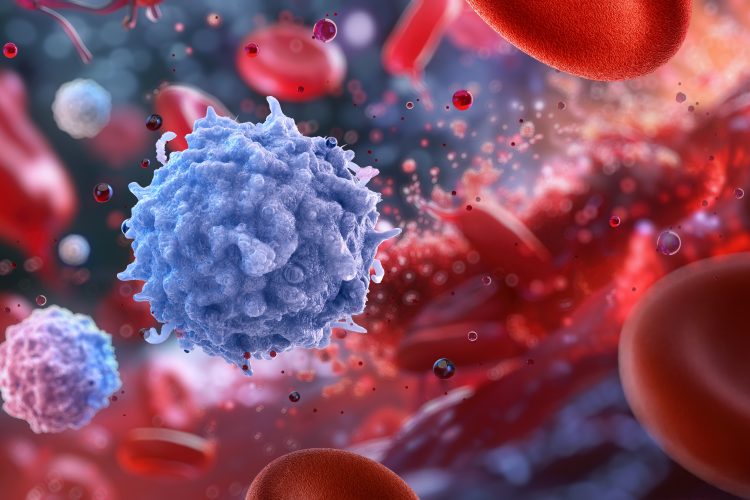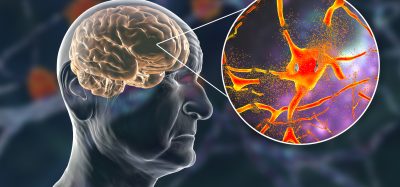’1104: tackling the root cause of allergic disease
Posted: 9 September 2024 | Woody Bryan (Revolo Biotherapeutics) | No comments yet
In this Q&A, Revolo Biotherapeutics’ CEO, Woody Bryan, discusses how ‘1104, the Company’s lead candidate for allergic diseases, shifts the immune system from a pro-inflammatory state to a homeostatic state, offering potential remission for allergic conditions. We delve into its unique mechanism of action, supported by preclinical and clinical findings. We discuss its broad-spectrum potential across various Th2-driven conditions, as well as its ability to be administered through different routes to enhance patient convenience and compliance.


Could you detail how ‘1104, derived from Mycobacterium tuberculosis Chaperonin 60.1, functions to reset the immune system and potentially provide remission for allergic diseases?
‘1104 acts upstream in the inflammatory response, targeting one of the first key players: antigen-presenting cells (APCs). In allergic diseases, APCs identify and present unknown antigens to the immune system. Upon antigen recognition, they deliver activating inflammatory signals like interleukin 4 (IL-4) and IL-13, which activate inflammatory T and B effector cells as well as eosinophils and neutrophils. These effector cells then drive chronic inflammation and tissue damage by producing additional cytokines such as IL-4, IL-5, and IL-13.
‘1104 shifts the immune system from a pro-inflammatory state to a regulated, homeostatic state. It binds to a novel receptor on APCs, reducing IL-4 and IL-13 signalling by activating SHP-1, a molecule that helps turn off these inflammatory signalling pathways. As such, it prevents the activation of T and B effector cells and reduces the effects of Th2 inflammatory cells. Additionally, ‘1104 increases the number of activated regulatory T and B cells, which help modulate the immune response and maintain immune tolerance, preventing the immune system from entering overdrive. As such, ‘1104 uniquely affects both the effector and regulatory arms of the immune response.
How does ‘1104’s approach of targeting upstream pathways in the immune cascade compare to traditional therapies that focus on single cytokines or immune cell types, and what advantages does this offer in the treatment of various Th2-driven diseases?
Most current treatments for allergic diseases, such as corticosteroids, antihistamines, or biologics that focus on single cytokines or T effector cell reduction, primarily target inflammation after it has already set in, addressing only the downstream effects. This can lead to inadequate long-term effectiveness with low rates of disease remission. They also require frequent administration. Moreover, ongoing use of corticosteroids, and some biologics, may cause serious side effects.
In contrast, ‘1104 is a first-in-class peptide that acts upstream of the inflammatory process. It restores immune homeostasis by uniquely influencing both the effector and regulatory components of the immune response. The goal is to do this without suppressing the immune system so that it can function naturally as a protective host defense mechanism.
This upstream intervention is particularly important for Th2-driven diseases, as it impacts the early mediators of inflammation, offering the potential for more durable disease control and improved patient outcomes.
In your preclinical research, what have been the most significant findings regarding ‘1104’s effectiveness in treating eosinophilic esophagitis (EoE) and other Th2 allergic diseases such as asthma and atopic dermatitis? How has this translated into the clinic?
‘1104’s mechanism of action has been validated through multiple preclinical studies1-6 and confirmed in clinical trials. These results underscore its potential as a broad-spectrum therapeutic for Th2 allergic and inflammatory diseases and its versatility in administration routes.
Across various disease models of allergic inflammation,1-6 a short course of ‘1104 treatment effectively prevents inflammatory cell infiltration, particular eosinophils, lymphocytes and neutrophils and cytokine release. These effects can last for a number of weeks. It has shown long-lasting relief from anaphylaxis symptoms and allergy biomarkers in food allergy models and demonstrated dose-dependent efficacy across different administration routes in allergic inflammation models. Its performance remained effective even in the presence of the inflammatory stimulant Poly I (polyinosinic-polycytidylic acid), underscoring ‘1104’s robustness and potential utility in conditions with strong or persistent inflammation. Additional positive animal data demonstrated that subcutaneous administration of ‘1104 did as well as intravenous administration in animal models. We are exploring additional routes such as sublingual administration that could further improve patient convenience and compliance.
‘1104’s preclinical findings have been duplicated in clinical settings. For instance, in a Phase IIa clinical trial for eosinophilic esophagitis (EoE), ‘1104 reduced eosinophil counts in the esophagus, a key marker of in EoE disease activity. The treatment also increased regulatory B cells (Bregs) and T regulatory cells (Tregs), with these effects maintained for several weeks, supporting potential for less frequent dosing and long-term remission. Additionally, ‘1104 significantly reduced pro-inflammatory CD4+ and CD8+ T cells and normalised 15 key EoE-related genes affecting inflammation, cell adhesion, and epithelial lining. Safety assessments revealed no safety signals, serious adverse events or drug discontinuations, and treatment resulted in a significant improvement in clinical symptoms, including patient-reported dysphagia, compared to placebo.
Given the antigen-agnostic nature and immune resetting mechanism of ‘1104, what potential does it have to address the unmet needs in allergic diseases beyond EoE, asthma, and atopic dermatitis, such as food allergies and other eosinophilic gastric disorders?
By acting upstream in the inflammatory cascade, ‘1104 can broadly modulate immune responses, rather than focusing on one specific antigen. This makes it particularly promising for conditions like eosinophilic gastric disorders, atopic dermatitis, food allergy, and asthma, where chronic inflammation and tissue damage result from the immune system’s overreaction to various triggers.
Through impact on both the effector and regulatory arms of the immune system, ‘1104 may help reduce the overactive Th2 response that drives these conditions, leading to better symptom control and potentially fewer flare-ups. This could be achieved with less frequent administration compared to current therapies, offering a key benefit for patients with chronic conditions.
The versatility of ‘1104 highlights its broad potential to address critical gaps in current allergic disease treatments. We have already seen its clinical potential in eosinophilic esophagitis (EoE). We are excited to advance this asset for the treatment of multiple diseases, both internally and in collaboration with partners, as it has significant potential to meet the large unmet needs in Th2-driven diseases.
References
- De Alba J, Cano L, Wright R, Riffo-Vasquez Y, Page C. IRL201104, a novel immunomodulatory peptide, shows efficacy on inflammatory endpoints and airway hyperresponsiveness in a house dust mite driven model of allergic inflammation with or without Poly I: C exacerbation. In: D21. Terminator: Control of Airway Inflammation and Immune Response in Asthma. Am J Respir Crit Care Med. 2024;A6982-A6982.
- De Alba J, Cano L, Wright R, Riffo-Vasquez Y, Page C. IRL201104, a novel immunomodulatory peptide, prevents inflammatory infiltration and proinflammatory cytokine release in a new model of ARDS associated with influenza infection. In: A21. Infection, Lung Injury, and Sepsis Models to Translation. Am J Respir Crit Care Med. 2023;A1075-A1075.
- De Alba J, Cano L, Wright R, Riffo-Vasquez Y, Page C. IRL201104, a novel immunomodulatory peptide, shows a long-lasting reduction in anaphylaxis symptoms and allergy biomarkers in a murine model of food allergy. J Allergy Clin Immunol. 2023;151(2).
- De Alba J, Cano L, Wright R, Riffo-Vasquez Y, Page C. IRL201104, a novel immunomodulatory peptide, shows a long-lasting, dose-response, and wide-spectrum effect through different routes of administration in a model of allergic inflammation. In: C21. Drilling Down on Inflammatory Mechanisms in Asthma via Human Cell and Murine Models. Am J Respir Crit Care Med. 2022;A3743-A3743.
- De Alba J, Cano L, Wright R, Riffo-Vasquez Y, Page C. IRL201104, a novel immunomodulatory peptide, has a comparable effect to dexamethasone in the inflammation associated with a murine model of ARDS. J Allergy Clin Immunol. 2022;149(2).
- Riffo-Vasquez Y, Spina D, Page C. Modulation of allergic inflammation in the lung by a peptide derived from Mycobacterium tuberculosis chaperonin 60.1. Clin Exp Allergy. 2020;50(4):508-19.
- Revelo Biotherapeutics. Revolo Biotherapeutics Announces Additional Data from Phase 2a Trial of ‘1104 in Adults with Active Eosinophilic Esophagitis. 2023. https://revolobio.com/2023/07/18/revolo-biotherapeutics-announces-additional-data-from-phase-2a-trial-of-1104-in-adults-with-active-eosinophilic-esophagitis/
About the author
Woody Bryan, President and Chief Executive Officer of Revolo Biotherapeutics


Related topics
Clinical Trials, Cytokines, Drug Development, Drug Targets, Immunology, T cells
Related conditions
Allergic reactions
Related organisations
Revolo Biotherapeutics
Related people
Woody Bryan (Revolo Biotherapeutics)








